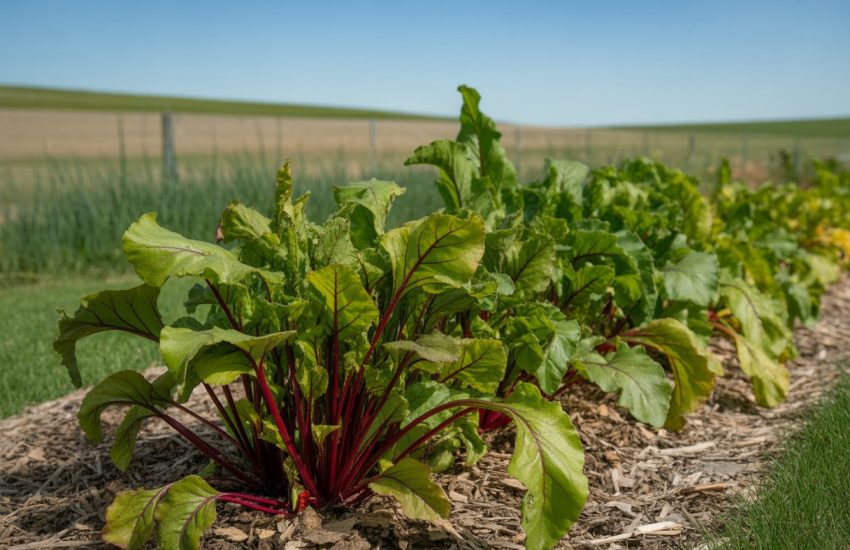What Does an Almond Tree Look Like: Characteristics and Visual Description
Almond trees are a popular fruit tree with a long history of cultivation. They are native to the Middle East and have been grown for thousands of years. Almond trees are known for their beautiful pink and white blossoms that appear in early spring. However, many people are not familiar with what an almond tree looks like beyond its blossoms.

Almond trees are small to medium-sized deciduous trees that can grow up to 30 feet tall. They have a spreading canopy and a trunk that can reach up to 12 inches in diameter. The bark of the tree is grayish-brown and has a rough texture.
The leaves of an almond tree are simple, meaning they have a single leaf blade. They are lance-shaped and have a serrated edge. The leaves are a dark green color and can grow up to 5 inches long. Almond trees are also known for their fruit, which is a drupe. The almond fruit is a hard-shelled nut that is encased in a fleshy outer layer.
Physical Characteristics of Almond Trees

Almond trees, also known as Prunus dulcis, are deciduous trees that belong to the Rosaceae family. They are known for their edible nuts and beautiful blossoms. Here are some of the physical characteristics that make almond trees unique.
Tree Structure and Height
Almond trees are medium-sized trees that can grow up to 30 feet tall. They have a single trunk with a rounded crown that spreads out as the tree matures. The branches are relatively thin and flexible, and they tend to droop slightly under the weight of the fruit.
Leaves and Bark
The leaves of an almond tree are lanceolate in shape, with a serrated margin. They are typically 3-5 inches long and 1-2 inches wide. The leaves are a dark green color and have a slightly glossy appearance.
The bark of an almond tree is smooth and gray when the tree is young, but it becomes more rough and furrowed as the tree ages. The bark is also known for its distinctive almond scent, which is particularly strong when the tree is pruned or damaged.
Overall, almond trees are beautiful and distinctive trees that are prized for their nuts and ornamental value. Their unique physical characteristics make them a popular choice for home gardeners and commercial orchards alike.
Almond Tree Growth and Development

Almond trees are deciduous trees that are known for their delicious and nutritious nuts. They can grow up to 30 feet tall and have a spread of up to 20 feet. Almond trees are relatively easy to grow and can be grown in a variety of climates, as long as they receive full sun and are planted in well-draining soil.
Life Cycle and Lifespan
Almond trees have a life span of 20-25 years, and they go through a cycle of growth and dormancy each year. In the spring, almond trees bloom with beautiful pink and white flowers. During the summer months, the fruit develops and grows. In the autumn, the leaves turn yellow and fall off, and the tree goes dormant for the winter.
Seasonal Changes
During the dormant season, it is important to prune the almond tree to promote healthy growth and fruit development during the spring bloom season. Dormant oil can also be applied to the tree during this time to help prevent pests and diseases.
In the spring, the almond tree begins to bloom, and the flowers attract bees and other pollinators. The fruit then begins to develop and grow throughout the summer months. In the autumn, the leaves turn yellow and fall off, and the tree goes dormant for the winter.
Overall, almond trees are a beautiful and tasty addition to any garden or orchard. With proper growing conditions and care, they can provide delicious and nutritious nuts for many years.
Reproductive Process

Flowering Patterns
Almond trees are deciduous, which means they lose their leaves during the winter. They typically bloom in late winter or early spring, before the leaves grow back. The flowers of an almond tree are either pink or white and are produced in large clusters. Each flower has five petals and a central pistil surrounded by many stamens. The pistil is the female reproductive part of the flower, while the stamens are the male reproductive parts.
Pollination and Fruit Production
Almond trees are not self-pollinating, which means they require cross-pollination from another almond tree to produce fruit. Honeybees are the primary pollinators of almond trees. When a bee visits a flower, it collects nectar and pollen. As it moves from flower to flower, it transfers pollen from the stamens to the pistils, fertilizing the flowers.
Once the flowers are fertilized, they develop into drupes, which are a type of fruit. The almond is actually the seed of the fruit. Almond trees produce two types of almonds: sweet and bitter. Sweet almonds are the type that are commonly eaten, while bitter almonds are used to make almond oil and almond extract.
In conclusion, the reproductive process of an almond tree is a complex and fascinating one. Cross-pollination is essential for fruit production, and honeybees play a vital role in this process. The beautiful blossoms of the almond tree are a sight to behold, and the resulting nuts are a delicious and nutritious treat.
Cultivation and Care

Soil and Water Requirements
Almond trees require well-drained soil and are susceptible to root rot in areas with poor drainage. They can grow in a variety of soil types, but thrive in sandy loam or loamy sand with a pH between 6 and 7.5. Almond trees are drought tolerant, but require consistent watering during the growing season. A mature almond tree can consume up to 2 inches of water per week. Irrigation should be deep and infrequent to encourage deep root growth.
Pruning and Disease Management
Pruning is an essential part of almond cultivation. It helps to maintain tree shape, increase yield, and prevent disease. Almond trees should be pruned during the dormant season to remove dead or diseased wood and improve sunlight penetration. Pruning should also be done to control tree size and shape. Almond trees are susceptible to fungal diseases such as shot hole and brown rot. These diseases can be managed through proper pruning, sanitation, and fungicide applications.
Almond trees require fertilization to maintain healthy growth and high yields. Fertilizer should be applied in early spring before bud break and again in late spring after harvest. Nitrogen, phosphorus, and potassium are the primary nutrients required by almond trees. Pesticides should be used sparingly and only when necessary to control pests such as navel orangeworm and peach twig borer. Frost damage can occur in almond trees during the bloom period. Protective measures such as wind machines and irrigation can be used to mitigate frost damage.
Overall, almond trees require careful attention to soil and water requirements, pruning, and disease management to thrive and produce high yields.
Harvesting and Uses of Almonds

Harvesting Techniques
Almonds are harvested when the hulls split open, revealing the ripe nuts inside. Harvesting is typically done by shaking the tree, either manually or using a machine. The nuts are then collected from the ground and separated from the hulls.
To ensure a successful harvest, proper almond tree care is essential. This includes regular pruning, fertilizing, and pest control. It is also important to water the trees properly, especially during the growing season.
Almond Products and Byproducts
Almonds are a versatile crop with many uses. The nuts can be eaten raw or roasted and are a popular ingredient in many recipes, including marzipan and other confections. Almond milk and almond flour are also popular alternatives to dairy milk and wheat flour, respectively.
In addition to edible nuts, almonds have a variety of byproducts. The hulls can be used as animal feed or as a source of biofuel. The shells can be used as a mulch or as a component in industrial products such as abrasives.
Overall, almonds are a valuable crop with many uses and benefits. With proper care and harvesting techniques, growers can produce high-quality nuts that are in demand around the world.
Frequently Asked Questions
How can one identify an almond tree?
Almond trees are deciduous trees that can grow up to 30 feet tall. They have a grayish-brown bark that is smooth when young and becomes rough and fissured as the tree ages. The leaves of almond trees are lance-shaped and have a serrated edge. They are usually green and grow up to 5 inches long.
What are the characteristics of almond tree leaves?
The leaves of almond trees are lance-shaped and have a serrated edge. They are usually green and grow up to 5 inches long. The leaves are arranged alternately on the stem and are deciduous, meaning they fall off in the fall.
At what time of year do almond trees bear nuts?
Almond trees typically bloom in late winter or early spring, around February or March. The nuts begin to form after pollination and mature in late summer or early fall, around August or September.
What is the typical size and growth pattern of an almond tree?
Almond trees can grow up to 30 feet tall and have a spread of 20-25 feet. They have a moderate growth rate and can live up to 25-30 years. Almond trees are usually pruned to maintain a height of 12-15 feet for ease of harvesting.
Can you eat the fruit of an almond tree?
The fruit of an almond tree is not actually a fruit, but a drupe. The outer hull of the drupe is removed to reveal the hard shell that contains the almond nut. The almond nut is the part that is consumed.
What are the visual differences of almond trees throughout the seasons?
In the spring, almond trees are covered in white or pink blossoms. In the summer, the leaves are a bright green color and the nuts begin to form. In the fall, the leaves turn yellow and orange before falling off. In the winter, the tree is dormant and has no leaves or flowers.


